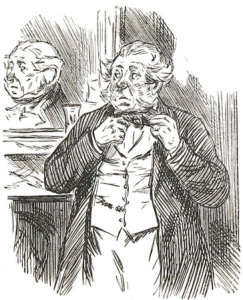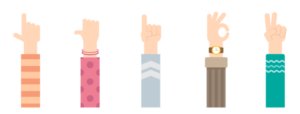Apraxia
Episode #6 of the course Introduction to clinical neuropsychology by Alicia Nortje
Welcome to Lesson 6. Today’s topic is Apraxia.
Definition of Apraxia
Apraxia describes a condition where people are unable to perform purposeful body movements or gestures. For example, patients might appear confused or move clumsily when asked to copy a gesture, pantomime using a tool, or given a specific tool.
Apraxia comes from the Greek words: “a” means “without”, “praxis” means “a deed” or “an action”, and “ia” means “a condition”.
The inability to perform the action is not a result of paralysis or lack of understanding of the instructions; instead, it appears that they have lost the “kinetic representation” of how to perform these actions.
There are different types of apraxia, and apraxia is often present alongside aphasia. For these reasons, the clinician should consider the following:
1. Aphasia and apraxia can be confused—a patient might look like they have apraxia, but instead, they didn’t comprehend the command. Make certain to test comprehension with questions that do not require movements (e.g., yes/no commands), reading instructions/questions, and asking patients to describe, rather than perform, the desired actions. However, patients with comprehension problems might still have apraxia.
2. Apraxia is more evident when patients are pantomiming than when they are using the actual item.
3. Patients with apraxia might use their limb to demonstrate action. This indicates that they did understand the request, but are unable to perform it. Sometimes patients with apraxia are unaware of their difficulties and might ascribe their performance to other causes (e.g., handedness, forgetfulness, and so forth).
4. Some patients with apraxia cannot perform a gesture when asked to pantomime, to imitate the clinician, or when shown a tool or object to use. Other patients are able to perform individual actions, but cannot combine these into a sequence. Finally, some patients demonstrate difficulties with performing specific muscular movements using the mouth and tongue—an important consideration when determining whether speech difficulties are due to aphasia.
Apraxia is difficult to test for, and its diagnosis is made by exclusion. In other words, other disorders are first tested for and excluded before the clinician can make a definitive diagnosis of apraxia. This adds to the complexity of diagnosing apraxia.
Types of Apraxia
We’ll learn about four types of apraxias. These are motor/limb-kinetic apraxia, ideomotor apraxia, ideational apraxia, and buccofacial apraxia.
Motor/limb-kinetic apraxia. People with motor apraxia appear to have reduced fine motor control, which is unmatched by a loss of muscular and nerve power. Therefore, people with this type of apraxia will struggle with tasks like putting on a watch, picking up a coin, or buttoning a shirt.
Ideomotor apraxia. Individuals with ideomotor apraxia are unable to copy gestures or perform gestures when asked. For example, if I form a peace sign with my fingers and ask a patient with ideomotor apraxia to copy me, then they will not be able to do so. The inability to perform the action results from the patient not being able to connect the command to the “kinetic” (i.e., motor) memory of how to perform the action; however, the kinetic memory does exist because these patients might perform the same action by accident or automatically. As an example, the patient with ideomotor apraxia is unable to demonstrate how to stir an imaginary cup of coffee, however, if handed a spoon for a real cup, then they can do so.
Ideational apraxia. Ideational apraxia is a more extreme form of apraxia where the patient can perform individual motor actions, but they’re not able to put these actions together to form a sequence. As an example, the patient with ideational apraxia can demonstrate how to pour an imaginary kettle, or how to add sugar to an imaginary cup of coffee. However, if this patient was asked to demonstrate how to make a cup of coffee, from beginning to end, starting with putting water in the kettle, then these patients are unable to combine the individual actions into a sequence.
Buccofacial apraxia. Patients with buccofacial apraxia struggle to form learned or meaningless movements with their mouth and tongue (e.g., blowing a kiss, blowing out a match, or trying to touch their nose with their tongue). Sometimes patients might present with speech difficulties, however, these difficulties are not purely language production problems (as seen in Broca’s aphasia); instead, the patient might have buccofacial apraxia.
Diseases Associated with Apraxia
Apraxia can result from strokes, progressive degenerative diseases (e.g., Alzheimer’s disease), tumors, or trauma. Apraxia can result from damage to the following areas of the brain: the thalamus, left hemisphere lesions (especially for people who are right-handed), corpus callosum, parietal lobe, and premotor area.
Conclusion
Today, we learned about apraxia, a condition where patients appear to have lost the ability to form a purposeful movement. Apraxia is difficult to diagnose, but make sure to watch the videos below for a better idea of how this syndrome presents. Tomorrow, we will learn about neglect.
Until tomorrow,
Alicia
Recommended videos
Buccofacial apraxia (note the tongue clicks)
Share with friends





